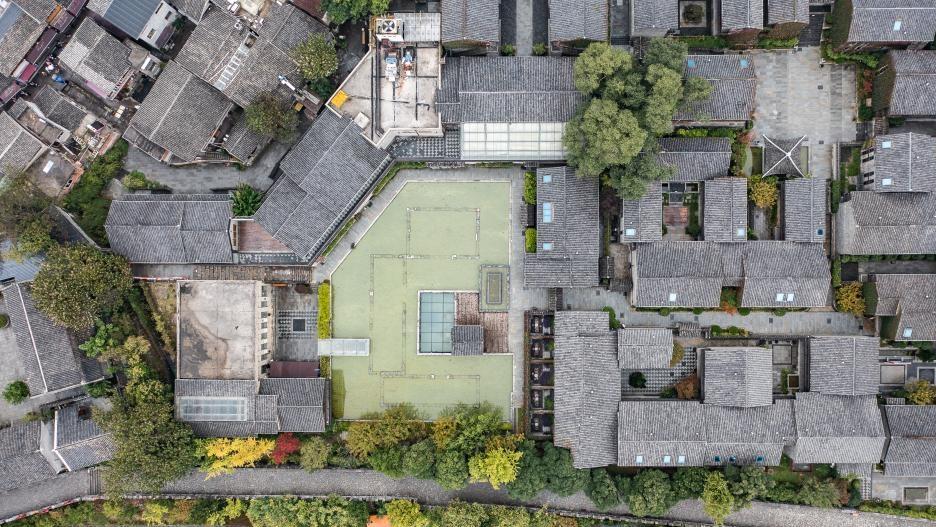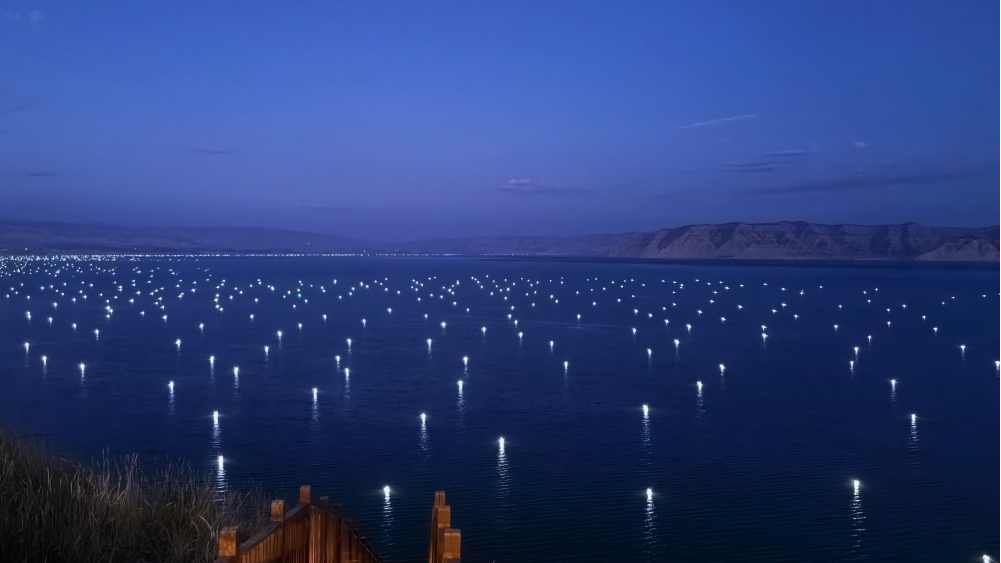County in NW China's Qinghai advances protection, governance of Heihe River Basin

Photo shows a beautiful autumn view of the Qilian Mountains in northwest China's Qinghai Province. (People's Daily/He Yong)
In recent years, Qilian county in northwest China's Qinghai Province has protected headwaters and tributaries of the Heihe River, known as the "mother river of the Hexi Corridor" and the second largest inland river in the country, advanced the conservation and restoration of the Heihe River wetlands, and continuously improved the water quality of the river's headwaters by leveraging technological advancements and enhancing management.
493 square kilometers under full surveillance
In autumn, the winds blow cold enough to make one tighten their sleeves. At 9 a.m., Qi Jinxian, head of the Shalongtan management and protection station in the Qilian Mountain National Park candidate area, dressed in a dark blue uniform, carefully checked the vehicles entering the station with his team. Each member wore sunglasses, with sunburnt, ruddy faces and rough, cracked hands, which have become their hallmark.
"Beyond that mountain lies the Bayi Glacier," Qi Jinxian said, gesturing towards a snow-capped peak that, even from a distance of over ten kilometers, is awe inspiring. The glacier serves as the source of the Heihe River, making it the crown jewel of their conservation efforts.
The scenery is magnificent, but long-term work here is a challenge.
The station, which oversees 493 square kilometers, operates like a well-oiled machine, with each of 32 staff members assigned to a specific area. Daily patrols are conducted to spot any unauthorized vehicles, stranded individuals or wildlife.
Moving towards the glacier, Qi Jinxian pointed out the sides: "This side is our tenth grid area." "Below that hill, we rescued a Tibetan gazelle two years ago." The 493 square kilometers, Qi Jinxian knows well.
"Every summer is the peak period for unauthorized vehicle intrusions," explained Qi Jinxian. "Some people come because it's a restricted area, driven by curiosity; others take advantage of the patrol gaps to enter through unpaved roads."
Early this spring, the conservation team found tire tracks in the snow during a routine patrol. Following the experience, they traced the vehicle tracks and found the involved vehicle stuck in the snow due to unfamiliarity with the road. After helping the vehicle out, the team gave a stern lecture to the tourists inside.
Two people, 18 years of patrolling

Photo shows the Bayi Glacier, which is the source of the Heihe River, in northwest China's Qinghai Province. (People's Daily/He Yong)
Yejin'eri and his wife have been responsible for a management and protection station located near a road to protect the river's headwaters for 18 years.
"Our main responsibility is the daily conservation of the Heihe River source region," Yejin'eri explained. Their patrol area covers more than 200 square kilometers, where over 50 tributaries flow from deep ravines into the Heihe River. "We must pay attention to the water quality, volume, and pollution of each river."
With so many tributaries, an essential part of the Heihe River source ecosystem, how do two people manage the patrols? The couple travel over 100 kilometers every day, making more than 20 trips per month. Since 2006, the couple has maintained this work rhythm without interruption.
"There was once when, on the way back, it started raining, and a usually small stream suddenly flooded. I tried to drive the motorcycle across, but it was knocked over near the edge. We grabbed onto each other and crawled ashore, reaching the station just after midnight," Yejin'eri recalled.
Their efforts, combined with those of others, are bearing fruit.
Qi Zhengdong, head of the county's forestry and grassland bureau, said the Heihe River rarely runs dry these days. "Its water quality has improved significantly, and there are more animals and plants in surrounding areas," the official added.
Conservation efforts boosted by technology, create an education platform for the future
Technology is playing a pivotal role in this ecological progress. "Smart screens" have been installed at management and protection stations along the river, while key access points in the protected areas are now monitored by cameras. A space-air-ground integrated monitoring system covering 8,000 square kilometers of the Qilian Mountains within Qinghai's borders has played a vital role in ecological protection efforts.
These technology systems have also led the conservation centers to become important bases of science education.
De Kang, head of a ecological conservation center in Qilian Mountain National Park, once helped researchers set up over 200 infrared cameras at altitudes above 3,500 meters. "Even though I've been a conservation officer for many years, I was still very excited the first time I saw the 'snow leopard group photo' recorded by the infrared camera," De said.
This excitement makes De eager to be an "after-school mentor." "Every month, study groups and school students come to our conservation station to experience river patrols, outdoor landscape painting, and hiking," De said. The walls of the conservation station are adorned with children's paintings filled with elements like antelopes, the Heihe River, and snow-capped mountains.
Gang Fu, the county's Party chief, said the county will continue to enhance technological capabilities and management to further improve the water quality of the Heihe River's headwaters.
Liu Tao, vice governor of Qinghai Province, said the outbound water flow of the Qinghai section of the Heihe River reached 1.967 billion cubic meters in 2023, a 9.7 percent increase compared to the average of the previous years, with the water quality staying at Grade II in the country's five-tier water quality system.
Photos
Related Stories
- Delicate thangka paintings in NW China's Qinghai
- Thousands of migratory birds rest in wetlands of Lake Gascule in NW China’s Qinghai
- Art injects impetus into ancient castle in NW China's Qinghai
- Tibetan fox with satellite positioning collar released into wild in Qinghai
- Vibrant autumn in Qinghai Lake, China's largest inland saltwater lake
Copyright © 2024 People's Daily Online. All Rights Reserved.









